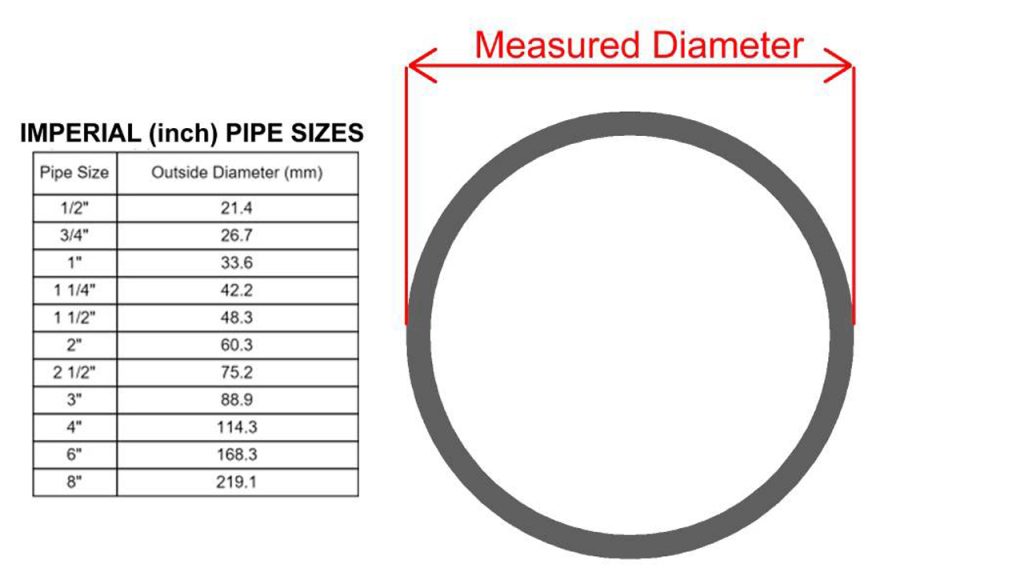How to Measure Plumbing Pipe Size?
Are you facing a plumbing issue and need to replace a pipe? Determining the correct pipe size is crucial for a successful plumbing repair or installation. In this article, we will guide you on how to measure plumbing pipe size accurately.

Photo by plasticpipeshop
Why is Measuring Plumbing Pipe Size Important?
Measuring plumbing pipe size is essential for several reasons. Firstly, it ensures that you select the right replacement pipe and fittings, preventing any potential leaks or compatibility issues.
Secondly, accurate pipe sizing allows for proper water flow and pressure, ensuring optimal performance of your plumbing system.
Lastly, measuring pipe size helps you estimate the amount of materials needed for your project, saving you time and money.
Different Types of Plumbing Pipes
Before we dive into how to measure plumbing pipe size, let’s familiarize ourselves with the different types of pipes commonly used in plumbing systems. The three main types are copper, PVC (polyvinyl chloride), and galvanized steel pipes.
Copper pipes are widely used for their durability and resistance to corrosion. They are commonly found in both residential and commercial plumbing systems.
PVC pipes are lightweight, easy to install, and cost-effective. They are commonly used for drain, waste, and vent (DWV) systems, as well as in irrigation and water supply lines.
Galvanized steel pipes were commonly used in the past but have been largely replaced by other materials due to their susceptibility to corrosion. However, they can still be found in older plumbing systems.
Pipe Dimensions and Sizing
To accurately measure plumbing pipe size, it’s important to understand the concept of nominal and actual pipe sizes. Nominal pipe size (NPS) is a numerical designation that indicates the approximate inside diameter (ID) of the pipe. Actual pipe size, on the other hand, refers to the true measurement of the pipe’s inside diameter.
It’s worth noting that nominal pipe sizes can be misleading, as they don’t necessarily reflect the actual dimensions of the pipe. For example, a 1-inch nominal pipe size may have an actual outside diameter (OD) of 1.315 inches. Therefore, it’s crucial to rely on actual measurements when determining pipe size.
There’s more to explore! Here’s another valuable read: How to Plumb a Pot Filler: Step-by-Step Guide for DIY Success
Tools Needed for Measuring Pipe Size
To measure plumbing pipe size accurately, you will need a few basic tools. Here are the tools commonly used for this task:
Tape Measure
A tape measure is a versatile tool that allows you to measure both the diameter and length of a pipe. Make sure to use a flexible tape measure for accurate results.
Caliper
A caliper is a precision instrument used to measure the inside and outside diameter of a pipe. It provides more accurate measurements compared to a tape measure.
Pipe Gauge Tool
A pipe gauge tool is specifically designed for measuring the outside diameter of pipes. It typically consists of a set of circular discs with labeled sizes.
Don’t miss out on related tips: Read this next: Iron Filters for Well Water
Step-by-Step Guide to Measuring Pipe Size
Now that you have the necessary tools, let’s walk through the step-by-step process of measuring plumbing pipe size:
Step-1: Determine the type of pipe
Identify whether you have a copper, PVC, or galvanized steel pipe. This will help you select the appropriate measuring method.
Step-2: Measure the outside diameter
If you’re working with copper or galvanized steel pipes, use a tape measure or caliper to measure the outside diameter. For PVC pipes, measure the outside diameter using a caliper or pipe gauge tool.
Step-3 :Measure the length
Use a tape measure to measure the length of the pipe from one end to the other. Make sure to include any fittings or connections in your measurement.
Step-4: Record the measurements
Note down the outside diameter and length of the pipe for future reference. This will be useful when selecting replacement pipes and fittings.
Common Mistakes to Avoid When Measuring Pipe Size
While measuring plumbing pipe size might seem straightforward, there are some common mistakes that you should avoid:
Neglecting to account for fittings
Remember to include the length of any fittings or connections when measuring the length of the pipe. Failure to do so may result in an incorrect pipe size.
Using the wrong measuring method
Different types of pipes require different measuring methods. Ensure that you use the appropriate tool for accurate measurements.
Not double-checking measurements
Always double-check your measurements to ensure accuracy. Mistakes in measurement can lead to selecting the wrong pipe size and fittings.
Conversion Charts and Resources for Pipe Sizing
If you’re unsure about the conversion between nominal and actual pipe sizes, there are various resources available to help you. Online conversion charts and calculators can assist in determining the correct pipe size based on your measurements.
Additionally, it’s a good practice to consult plumbing codes and standards specific to your region. These resources provide guidelines for pipe sizing and can help you ensure compliance with regulations.
Importance of Accurate Pipe Sizing in Plumbing Projects
Accurate pipe sizing is crucial for the success of any plumbing project. Whether you’re repairing a leak or installing a new plumbing system, selecting the correct pipe size ensures efficient water flow, prevents leaks, and minimizes the risk of system failure.
Improperly sized pipes can lead to issues such as low water pressure, restricted flow, and increased energy consumption. By taking the time to measure pipe size accurately, you can avoid these problems and ensure the longevity of your plumbing system.
When to Consult a Professional Plumber for Pipe Sizing
While measuring plumbing pipe size can be done by homeowners, there are instances when it’s best to consult a professional plumber. If you’re dealing with complex plumbing systems, multiple pipe sizes, or unfamiliar materials, it’s wise to seek expert advice.
Professional plumbers have the knowledge and experience to accurately determine pipe size and select the appropriate materials. They can also identify potential issues and recommend the most efficient and cost-effective solutions for your plumbing needs.
Conclusion
Accurately measuring plumbing pipe size is essential for any plumbing repair or installation project. By following the guide outlined in this article, you can ensure that you select the right replacement pipe and fittings, prevent leaks, and optimize the performance of your plumbing system.
To use the appropriate tools, double-check your measurements, and consult resources or professionals when needed. With the right approach, you can tackle any plumbing pipe size challenge and achieve successful results every time. Don’t let plumbing pipe size confusion hamper your repair or installation projects. Take control of your plumbing needs by mastering the art of measuring pipe size accurately.


